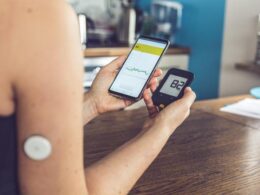When it comes to sharing medical records, there is a general environment of mistrust — not only of the private sector but also of public institutions, such as the UK’s NHS.
Financial Times
Pooja Rao
DECEMBER 13 2021
In a medical artificial intelligence business, the quality of your algorithms — and therefore the value of your company — depends on your access to data.
In this, the health tech sector is in some ways similar to advertising and internet search industries: it has quickly learnt that data is immensely valuable.
However, on the internet, most user-generated data is used to train algorithms that encourage consumption, commerce or engagement.
Health data is vastly different — it can be used for the global public good. It can help us track epidemics and prevent their spread, discover new drugs and diagnostics, and advance medical research that can help us live healthier, longer lives.
So it is imperative that our health tech industry embraces this difference.
Data has always been the currency of science:
like a form of silver which, when distributed, allows us to evaluate experiments, test hypotheses, discover side effects, and continuously improve the practice of medicine.
With the emergence of AI, though, data has become gold.
Healthcare facilities typically seek patient consent for use of their data via a blanket ‘research use’ provision that is a condition for using the medical service
- Some 20 US healthcare systems recently formed a data company called Truveta, raising $200m to capitalise on the value of their combined patient records.
- In 2018, pharmaceutical company Roche valued US cancer patient data at almost $2bn, through its acquisition of Flatiron Health.
Hospitals and diagnostic labs are a rich source of this kind of health data for AI developers.
Their databases of images and medical records are fodder for machine learning algorithms.
These healthcare facilities typically seek patient consent for use of their data via a blanket “research use” provision that is a condition for using the medical service.
But this wholesale transfer of the value of data from individuals to healthcare providers, and then to the industry, has not escaped the public eye.
When it comes to sharing medical records, there is a general environment of mistrust — not only of the private sector but also of public institutions, such as the UK’s NHS.
When it comes to sharing medical records, there is a general environment of mistrust — not only of the private sector but also of public institutions, such as the UK’s NHS.
And what of the health data that we leak from our wearable devices?
Smartphones are used by 6bn people globally, and are fast reaching the next billion users.
Body-worn sensors and smartphone cameras that track heart rate and rhythm, blood oxygen levels, breathing rates, cardiovascular and metabolic status, as well as digital symptom checkers, are not far behind.
In places with under-developed and underfunded healthcare systems, this digital version of healthcare could reach people whom the traditional physician-centred version has not adequately served.
- For example, in 2021, tuberculosis became the first medical condition to merit a World Health Organization recommendation that “software programs may be used in place of human readers to interpret X-rays”.
Tuberculosis is not a first-world disease. Digital health now looks set to rapidly penetrate densely populated middle-income countries, aided by the wide gap between healthcare demand and supply, unprepared regulators, and plentiful 4G data.
We are on the brink of entering an era where more health data is generated by individuals through their phones and wearables than by healthcare workers populating electronic medical records in hospital databases.
Imagine you wanted an evidence-based answer to a health question such as ‘’What is causing my migraines?” or “What side effects does this new contraceptive pill have in women of my age and ethnicity?”
The answer is probably there already, in the streams of data floating through our health apps and wrist-worn sensors.
Imagine you wanted an evidence-based answer to a health question such as ‘’What is causing my migraines?’ The answer is probably there already, in the data floating through our health apps and wrist-worn sensors
We must make this data a common good so that society can benefit from it.
The quantum of open data available for digital health is a good predictor of the number of start-ups, independent developers, research papers and innovative software products that will emerge.
- Since 2016, publicly funded efforts have made dozens of open radiology data sets available.
- Five years later, we have 150 US Food and Drug Administration-approved AI radiology products, most developed by start-ups rather than industry incumbents.
Health data is most powerful (and valuable) when aggregated, preferably at scale.
Yet individual ownership of health data and consent for its use are inviolable. So, to reconcile these two principles, we need digital health tools that allow individuals to meaningfully and explicitly provide or revoke consent to use personal health data.
Yet individual ownership of health data and consent for its use are inviolable.
Health data is most powerful (and valuable) when aggregated, preferably at scale.
We need more experiments with digital health data trusts and co-operatives that are built for user-generated streaming health data.
Data unions promise decentralisation, transparency, meaningful revocable consent, and a share of the benefits to individuals who contribute data, incentivising more sharing.
With privacy and security regulations, we need data portability mandates that allow control and custody of our health data.
Above all, we need those businesses that intend to capitalise on digital health to think longer-term — returning a larger share of the value of healthcare data to the individuals who generate it.
Originally published at https://www.ft.com on December 13, 2021.
About the author
Pooja Rao
TAGS: Data Monetization; Data Driven Health Care; Digital Health Systems Leapfroging












